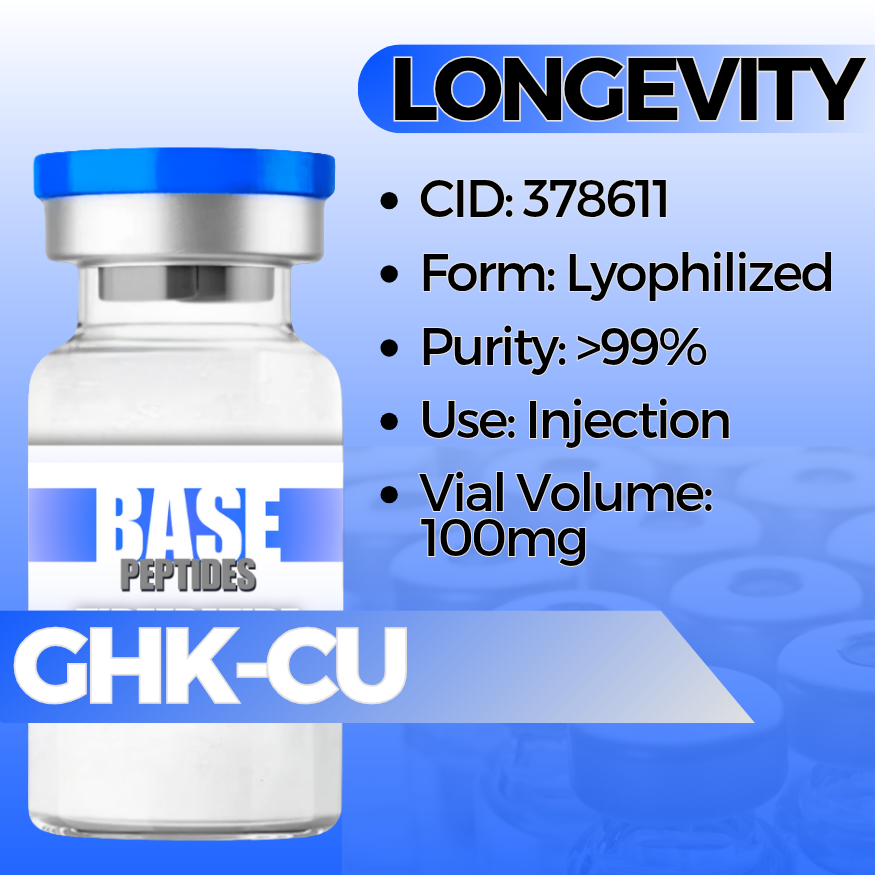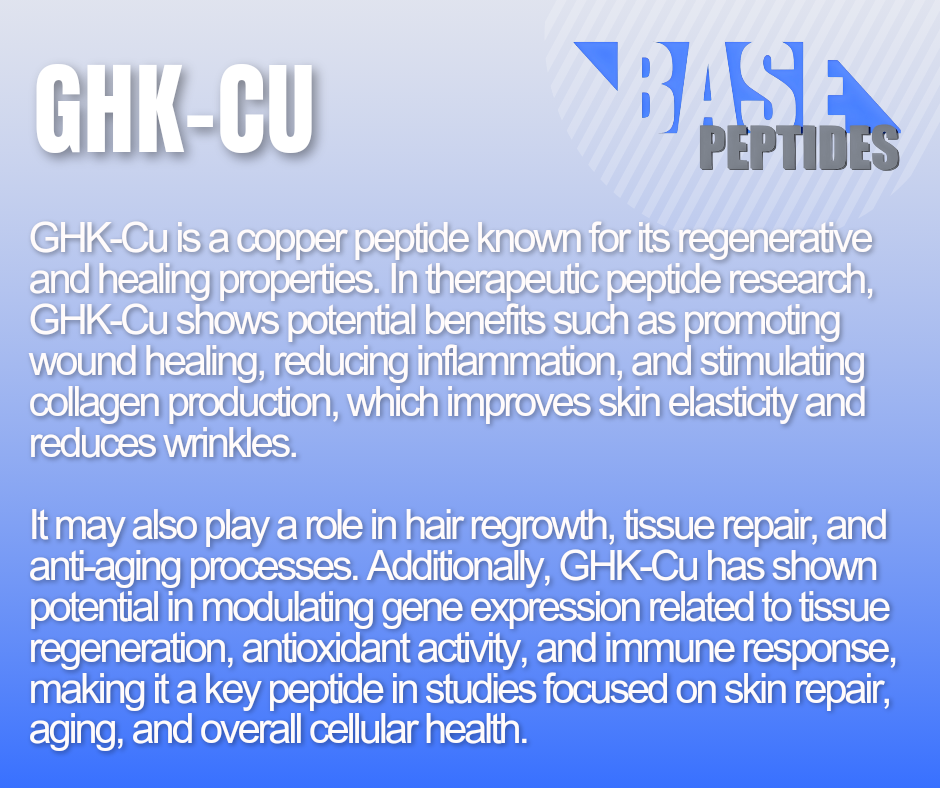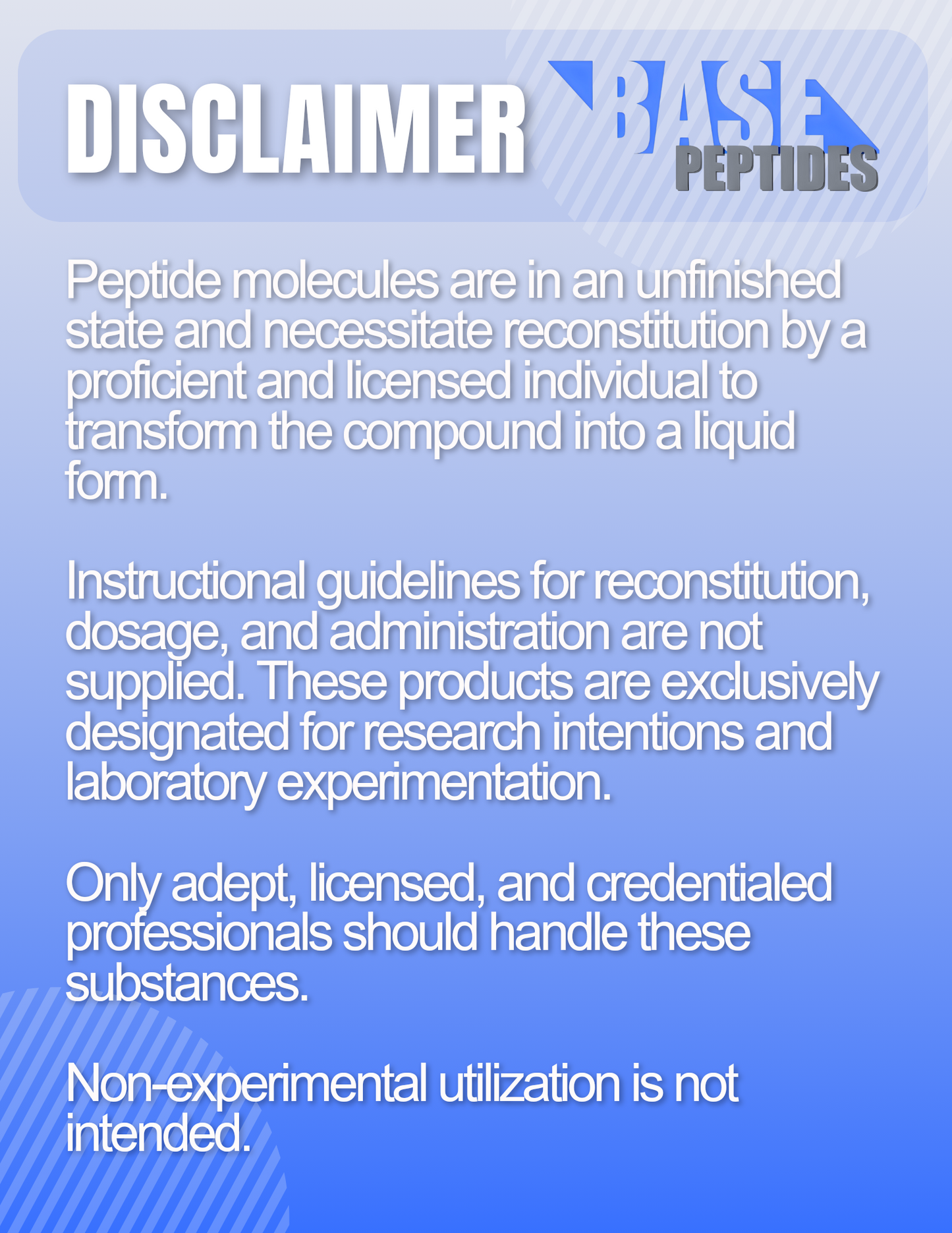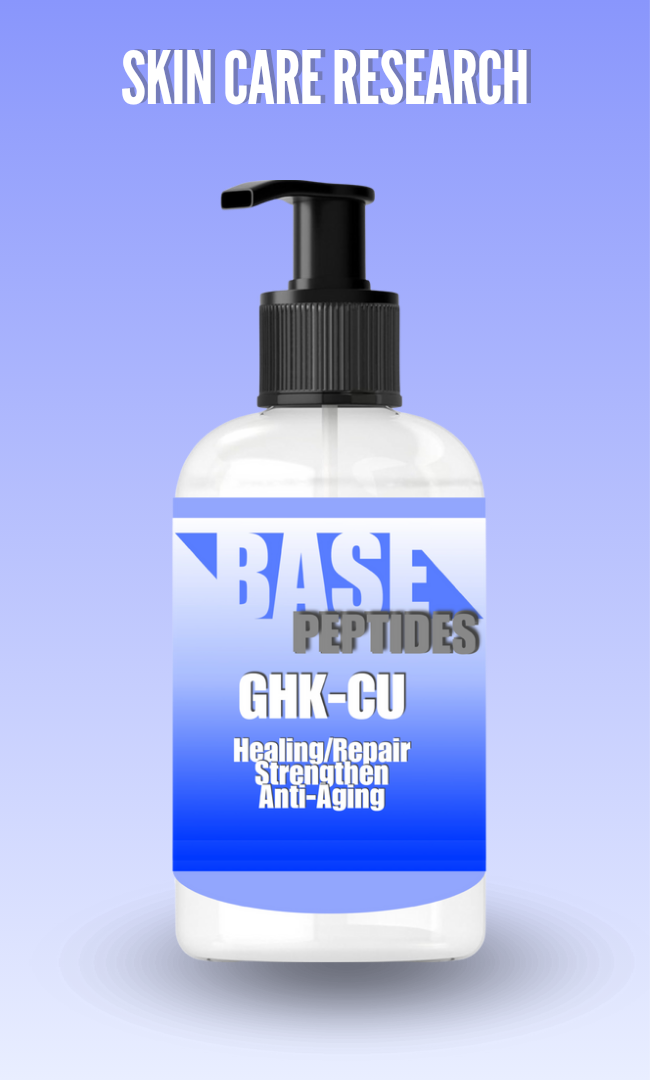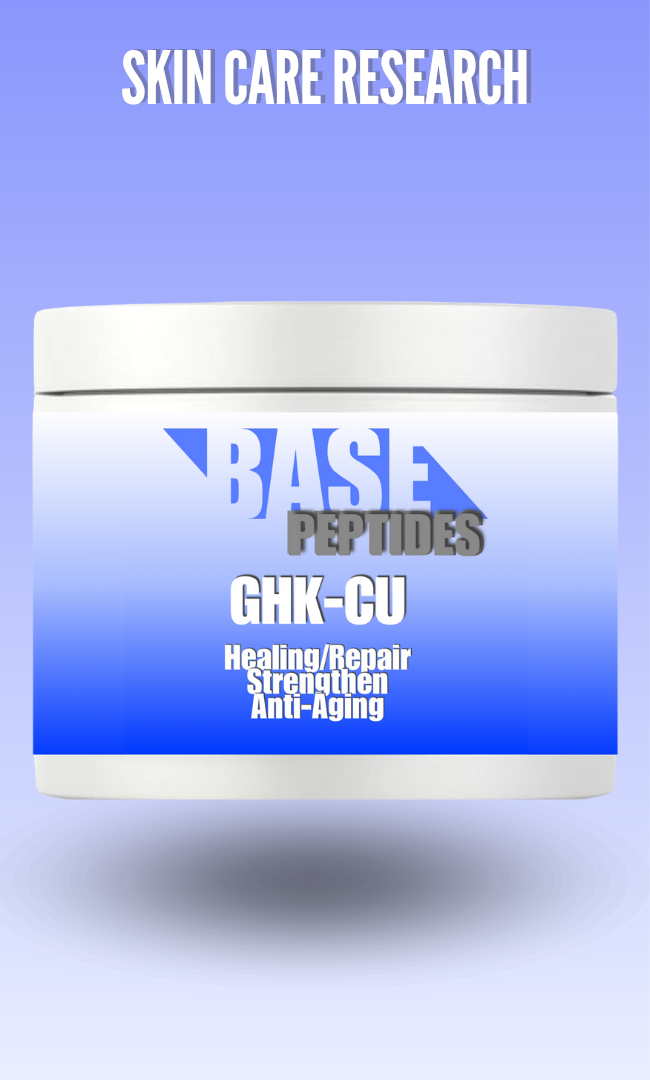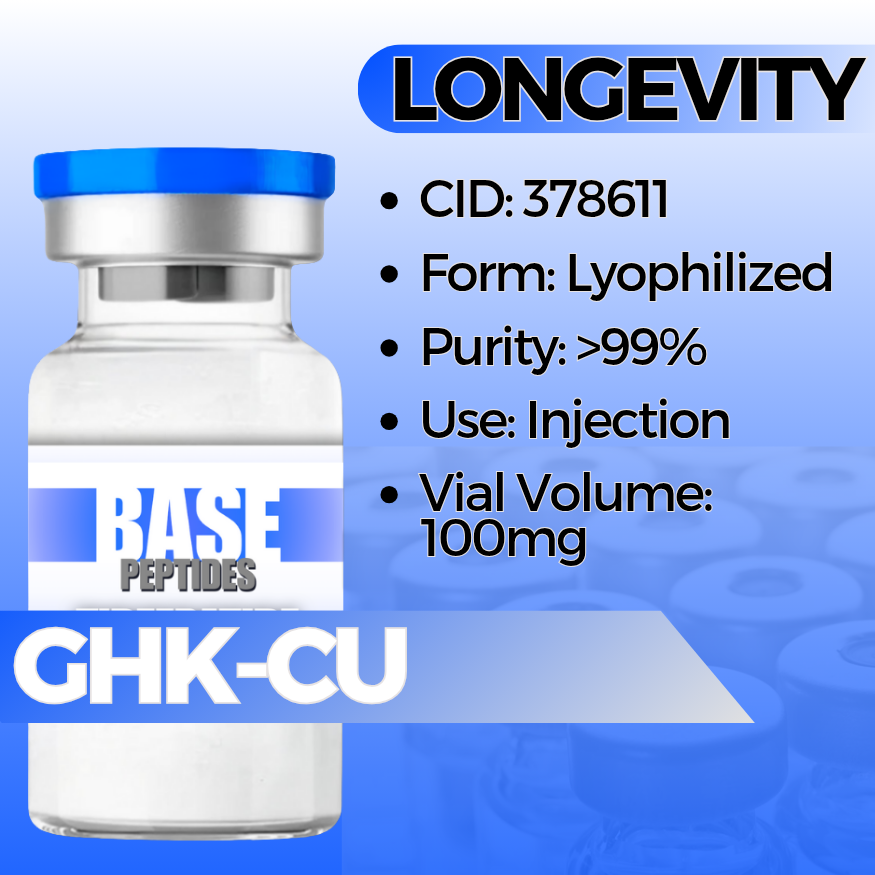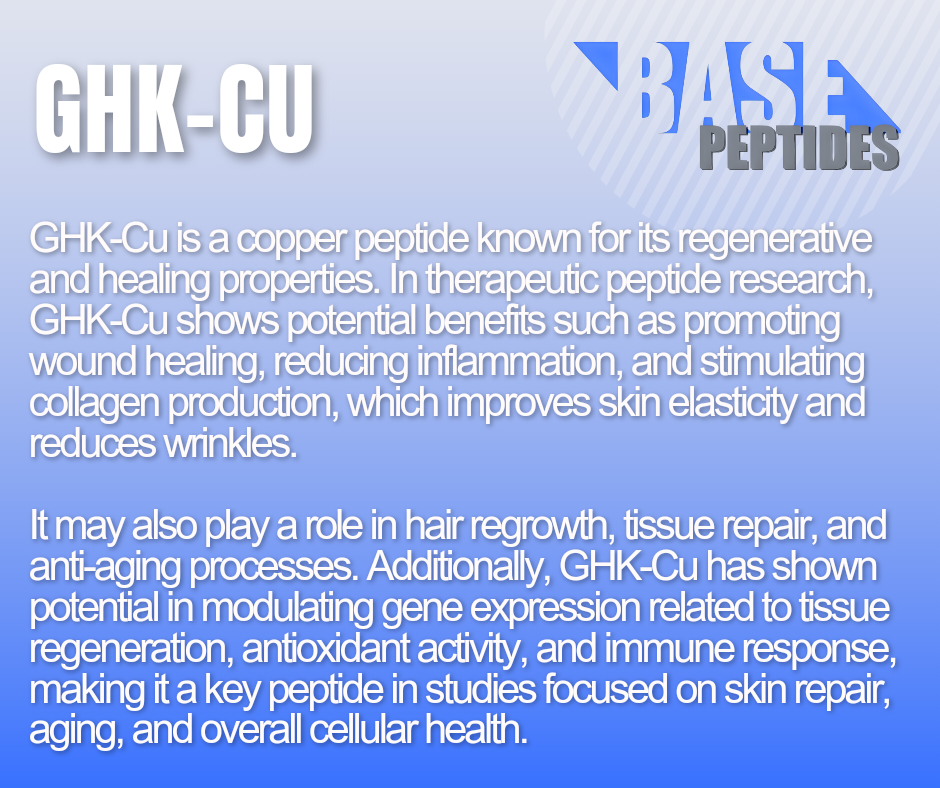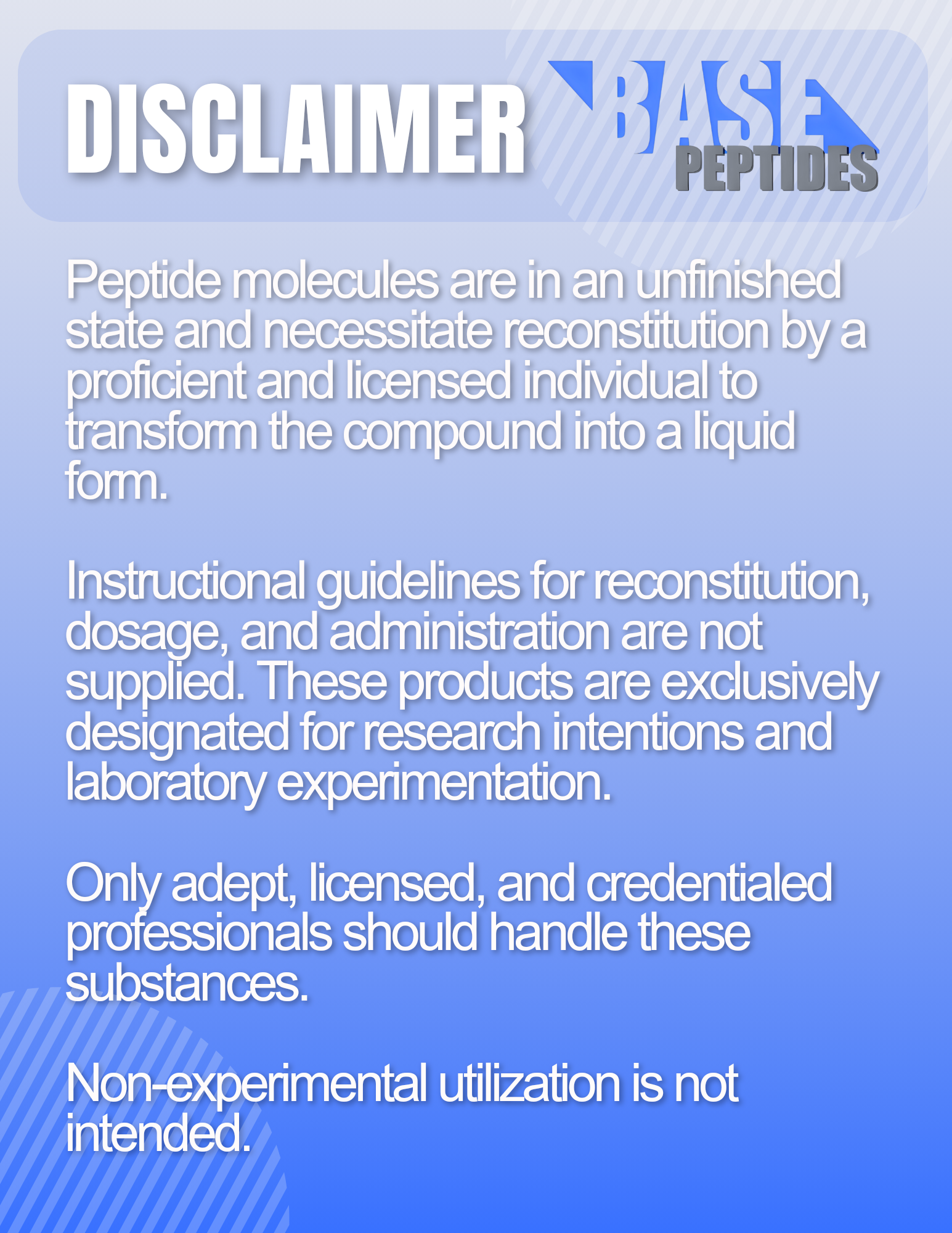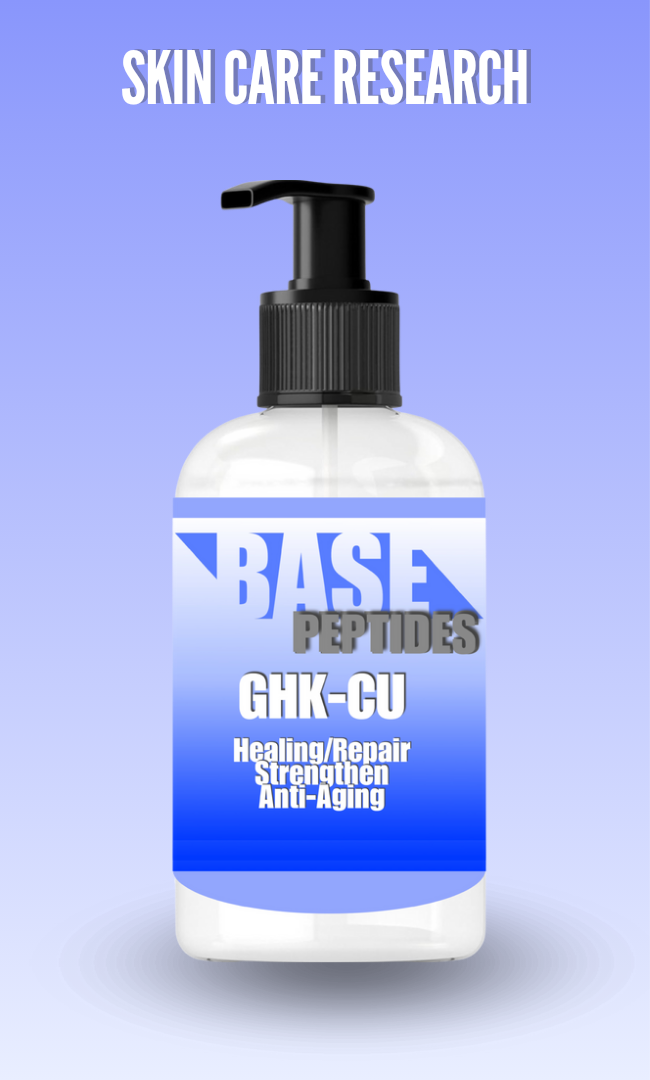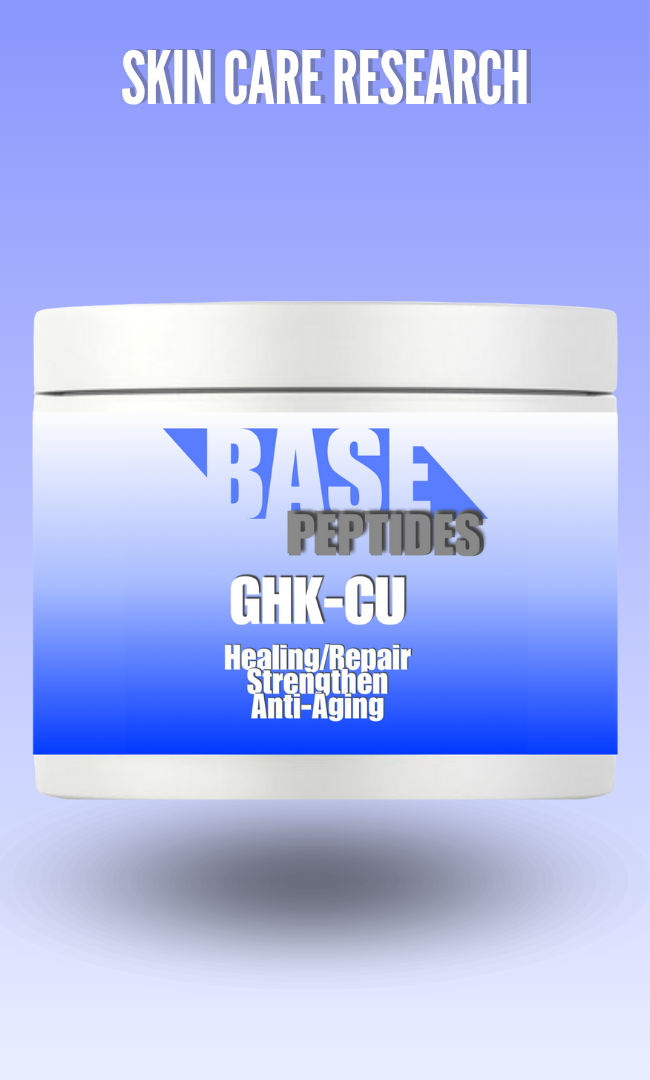GHK-CU Copper Peptide
GHK-CU Copper Peptide
Base Peptides are intended for licensed medical professionals and experienced researchers. Reconstitution required. Dosing and use instructions are not provided.
Couldn't load pickup availability
GHK-Cu — Copper Tripeptide Complex
GHK-Cu is a naturally occurring copper-binding peptide made of three amino acids: glycine, histidine, and lysine. In research, it’s valued for its role in skin and tissue biology, where it influences cell signaling, collagen production, and wound-healing markers.
- CAS: 89030-95-5 (GHK-Cu)
- PubChem CID: 378611
- Formula / MW: C14H24N6O4·Cu · ≈ 404 Da
- Sequence: Gly-His-Lys (GHK)
- GHK is a small signal peptide that binds copper ions—an essential mineral for tissue renewal and enzyme function.
- This binding activates a cascade of cell messages linked to collagen and elastin production.
- It also helps regulate inflammation and antioxidant activity in local tissue environments.
- To study cell-matrix communication and regeneration.
- To examine the impact of trace-metal balance (especially copper) in cell cultures.
- To investigate skin, wound, or ECM remodeling pathways in vitro and in vivo.
Key Studies — What Was Tested, What Changed, Why It Matters
Skin-repair and wound-healing models
- What was tested: Cell-culture and animal skin-wound models comparing copper-bound GHK vs controls.
- What changed: Enhanced expression of collagen, integrins, and growth factors associated with skin regeneration. Improved wound closure speed and smoother collagen organization were often observed.
- Why it matters: Provides a molecular link between copper homeostasis and the skin’s ability to rebuild structure after injury.
Anti-oxidant and anti-inflammatory pathways
- What was tested: Oxidative-stress assays in fibroblasts and keratinocytes.
- What changed: Increased production of protective enzymes like superoxide dismutase (SOD) and catalase; reduced inflammatory markers such as IL-6 in stress conditions.
- Why it matters: These findings suggest GHK-Cu can serve as a model molecule for studying cell protection and aging pathways.
Hair-follicle and dermal remodeling research
- What was tested: Topical and cell-based studies focusing on hair-follicle signaling and dermal fibroblast activity.
- What changed: Up-regulation of genes involved in follicle growth and dermal repair, plus better alignment of collagen fibers under microscopy.
- Why it matters: Shows GHK-Cu’s broader relevance for skin-biology and regenerative-cosmetic research fields.
Potential Research Applications
Skin Biology & Regeneration
- Collagen/elastin synthesis markers
- Keratinocyte-fibroblast co-culture models
Trace-Metal & Enzyme Studies
- Copper-dependent enzyme regulation (SOD, lysyl oxidase)
- Metal-transport and chelation assays
Inflammation & Oxidative Stress
- Reactive-oxygen species (ROS) measurement
- Cytokine and gene-expression analysis
Synergistic Peptides (for Study Design)
BPC-157
- Why pair: Complements GHK-Cu in tissue-healing and angiogenesis research models.
- Angle: Co-culture or sequential application to study combined effects on microcirculation and matrix organization.
Thymosin-β4 / TB-500
- Why pair: Often used to assess cell migration and actin remodeling alongside copper-peptide cues.
- Angle: Compare timing and gene-expression panels between early and late response peptides.
Epithalon / Epitalon
- Why pair: Used for cell longevity and telomere-related pathways, complementing GHK-Cu’s rejuvenation signaling studies.
- Angle: Combined cell-aging assays examining oxidative stress and telomere-length preservation.
Design Notes
- Define copper concentration precisely; small differences alter results.
- Track timing—GHK vs GHK-Cu kinetics differ in culture.
- Maintain metal-free controls to isolate copper’s contribution.
Known Concerns (Context)
- Metal variability: Results depend on copper source and buffer composition—document both carefully.
- Assay sensitivity: Some readouts respond to even trace metals; replicate under controlled conditions.
- Context: GHK-Cu is a research molecule, not a cosmetic or medical active ingredient.
Follow institutional SOPs and material-handling guidance for metal-bound peptides.
Specifications & Handling
- Form: Lyophilized powder (lot-coded)
- Purity: ≥ 99% (HPLC/MS verified)
- Storage: ≤ −20 °C; protect from light/moisture
- In solution: Aliquot and store frozen; avoid repeat freeze–thaw
- Additives: None unless specified per lot
- Packaging: Tamper-evident, research-only labeling
Regulatory & Use Notice
Sold for laboratory research use only. Not for human consumption, medical, or veterinary use. No human-use instructions are provided. Buyer is responsible for safe handling and regulatory compliance.
GHK-Cu Peptide Research | Copper Tripeptide | Skin Regeneration & Antioxidant Pathways
